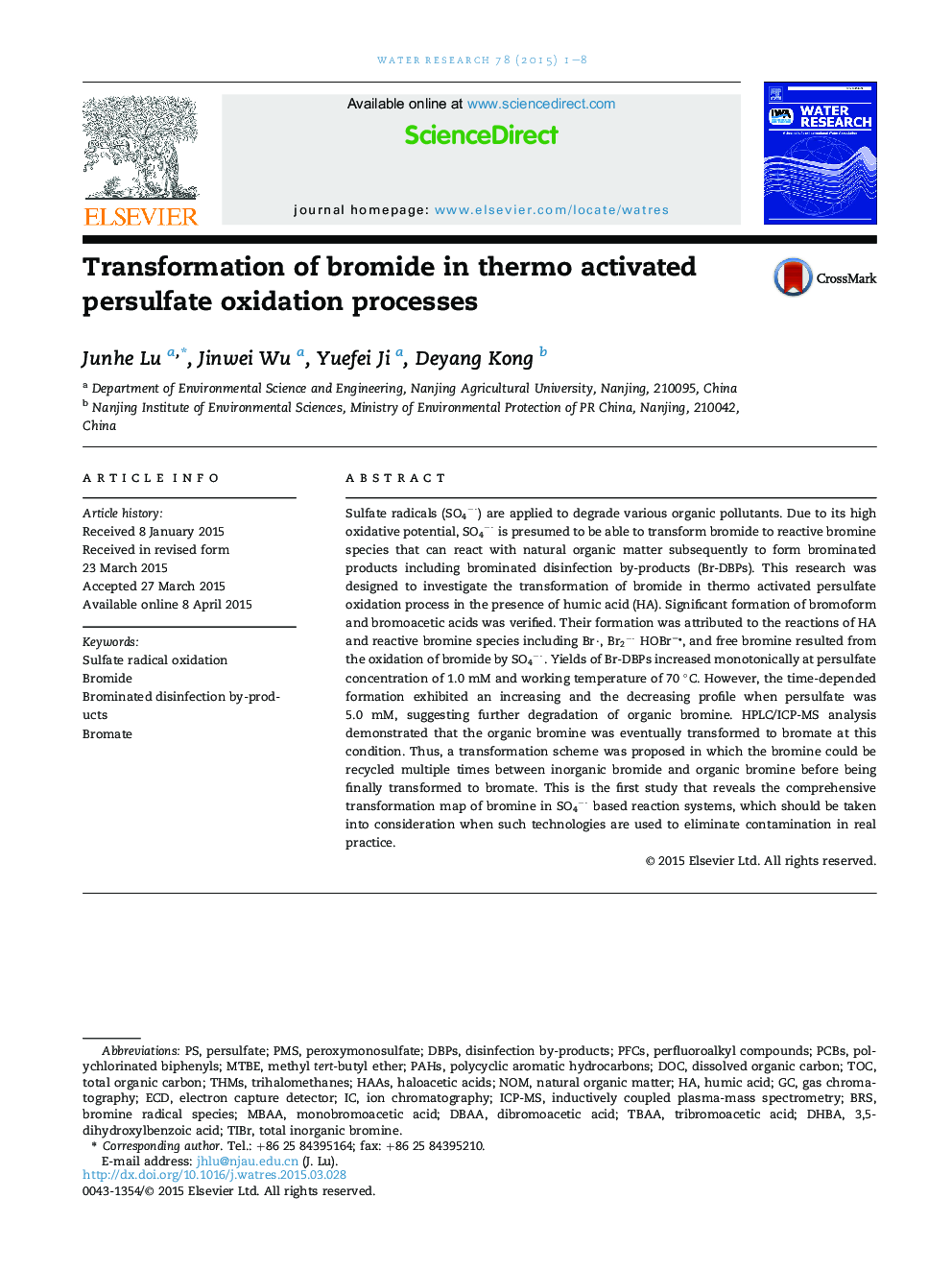| کد مقاله | کد نشریه | سال انتشار | مقاله انگلیسی | نسخه تمام متن |
|---|---|---|---|---|
| 4481110 | 1623090 | 2015 | 8 صفحه PDF | دانلود رایگان |
• Br− can be transformed to reactive bromine species by SO4−·SO4−·.
• Reactive bromine species can react with humic substance to form Br-DBPs.
• Br-DBPs can be further degraded by SO4−·SO4−·.
• Br− is eventually transformed to BrO3−.
Sulfate radicals (SO4−·SO4−·) are applied to degrade various organic pollutants. Due to its high oxidative potential, SO4−·SO4−· is presumed to be able to transform bromide to reactive bromine species that can react with natural organic matter subsequently to form brominated products including brominated disinfection by-products (Br-DBPs). This research was designed to investigate the transformation of bromide in thermo activated persulfate oxidation process in the presence of humic acid (HA). Significant formation of bromoform and bromoacetic acids was verified. Their formation was attributed to the reactions of HA and reactive bromine species including Br·, Br2−·Br2−· HOBr−, and free bromine resulted from the oxidation of bromide by SO4−·SO4−·. Yields of Br-DBPs increased monotonically at persulfate concentration of 1.0 mM and working temperature of 70 °C. However, the time-depended formation exhibited an increasing and the decreasing profile when persulfate was 5.0 mM, suggesting further degradation of organic bromine. HPLC/ICP-MS analysis demonstrated that the organic bromine was eventually transformed to bromate at this condition. Thus, a transformation scheme was proposed in which the bromine could be recycled multiple times between inorganic bromide and organic bromine before being finally transformed to bromate. This is the first study that reveals the comprehensive transformation map of bromine in SO4−·SO4−· based reaction systems, which should be taken into consideration when such technologies are used to eliminate contamination in real practice.
Figure optionsDownload high-quality image (97 K)Download as PowerPoint slide
Journal: Water Research - Volume 78, 1 July 2015, Pages 1–8
